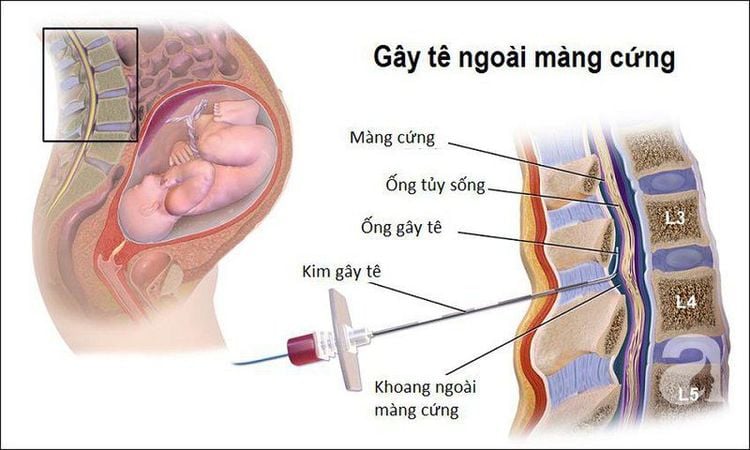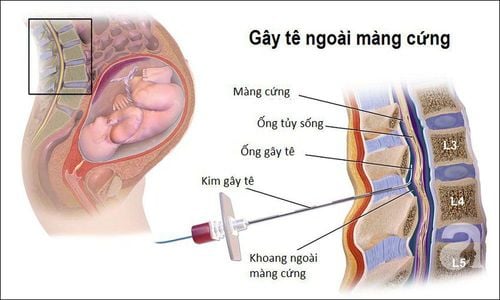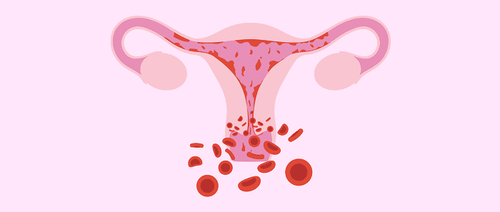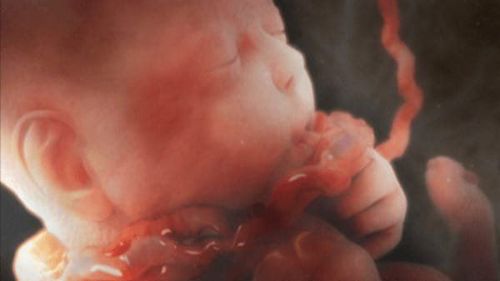This is an automatically translated article.
The article is professionally consulted by an Anesthesiologist, anesthesiologist, anesthesiologist - Department of General Surgery & Anesthesia - Vinmec Hai Phong International General Hospital.
Pain during labor can lead to a number of adverse reactions in the body, affecting both the mother and the fetus. Currently, epidural anesthesia in labor is an effective pain reliever in labor, helping the mother to control pain while the baby is born.
1. Epidural Anesthesia Technique
The epidural space is located between the yellow ligament and the dura mater. This organ extends from the occipital foramen to the sacrum, and contains the nerve roots of the spinal cord, fat, and blood vessels. To perform an epidural, the doctor injects an anesthetic and an opioid into the lumbar epidural space. From there, the drug will gradually diffuse across the dura into the subarachnoid space. Here, the drug will have an effect mainly on the spinal nerve root region and weaker on the spinal cord and lateral spinal nerve fibers. Because the epidural space is larger than the spinal space, the epidural technique will require a larger volume of anesthetic than when performing spinal anesthesia. The effect of epidural anesthesia usually begins about 15 minutes after injection.The epidural technique is ideal when it is necessary to inhibit sympathetic nerves and sensory fibers, reduce endogenous catecholamine production, thereby initiating analgesia. This method also has the potential to lower blood pressure or restore blood pressure readings to pre-delivery levels. The degree of effect on the motor nervous system depends on the concentration of the local anesthetic. Accordingly, most local anesthetics have an effect on skeletal muscle only with no appreciable effect on smooth muscle at doses approved for clinical use.
In terms of application, epidural anesthesia is often used as an analgesic technique in labor. Most pregnant women do not need an epidural before the cervix is dilated to 3 cm, unless the woman is using oxytocin to promote labor. Despite this, some literature suggests that the use of epidural anesthesia in labor before 5 cm of cervical dilation has the potential to adversely affect later stages of labor. .

Gây tê ngoài màng cứng là kỹ thuật giảm đau cho thai phụ chuyển dạ sinh con
2. Application of epidural anesthesia in labor
The technique of epidural anesthesia in labor is the most effective method to help pregnant women reduce pain during labor. The anesthesiologist will inject anesthetic into the epidural space to help the mother reduce pain. At this time, the pregnant woman can feel the contractions of the uterus but almost no longer feels the pain. Usually, this technique of analgesia is performed when the cervix has dilated to 3 cm and the woman is in active labor, but it is up to the doctor's decision on a case-by-case basis. Specifically.The doctor will place an intravenous line for the mother before performing the epidural analgesia. During the procedure, a needle is inserted into the patient's lumbar region, about below the spinal cord to avoid injury to the spinal cord. The mother needs to stay in the arched back position to help the spine expand and stay in this position throughout the pain relief technique during labor. This procedure can be performed on the side, but it is more convenient when the pregnant woman is sitting next to the bed and the head rests on the shoulder of the supporter.
The lower back of the pregnant woman will be disinfected and the doctor will only numb a small area (about the size of a dime). An epidural needle will be inserted between the two lumbar vertebrae (the area under anesthesia) and threaded into the epidural space. Next, a catheter (hollow plastic tube about the size of a pen tip) will be threaded through the anesthetic needle. Sometimes, the catheter can reach a nerve during insertion, leading to a mild electric shock-like sensation or numbness down one leg. Then, the needle will be carefully removed by the doctor, and the catheter is fixed to the back of the mother.

Kỹ thuật gây tê ngoài màng cứng
The epidural technique during labor helps pregnant women experience painless delivery and generally has little effect on the fetus. In addition, the mother and baby will be continuously monitored throughout the labor process when applying pain-relieving techniques during childbirth. For technical and anatomical reasons, there may be cases where an epidural catheter may not be successful or the anesthetic injected may not work or be effective. Overall, the failure rate of an epidural during labor falls in about 5% of births.
3. Side effects when performing pain-relieving techniques during labor
Anesthesia techniques during labor are effective in keeping the mother pain-free, but like other procedures, there is the potential for certain side effects. Women sometimes feel their legs become heavy, uncomfortable, difficult to exercise or have urinary retention. In that case, the doctor will place a catheter into the bladder to drain the urine. In addition, the mother's blood pressure can drop during labor, so it must be checked and treated with drugs or fluids in an emergency. That's why pregnant women need to receive fluids before performing epidural techniques.Common problems include:
Pregnant women feel chills and itching Difficulty in performing epidural catheterization Insufficient, uneven or failed anesthetic effect, leading to reduced effectiveness poor pain. In some cases, it is even necessary to repeat the epidural procedure if the doctor finds that the pain relief is not satisfactory.
To ensure standards for epidural technique in labor , anesthesiologists and midwives need specialized training to fully recognize the possible risks in order to avoid or deal with complications. Besides, the mother and fetus will be continuously monitored during labor.

Bà bầu nhẹ nhàng chào đón con yêu tại Vinmec với kỹ thuật giảm đau trong đẻ
Epidural anesthesia technique has now been applied at Vinmec International General Hospital to help pregnant women experience painless, gentle labor successfully. At Vinmec, there is a team of professional anesthesiologists. , experienced will help mothers experience the safest painless delivery.
Please dial HOTLINE for more information or register for an appointment HERE. Download MyVinmec app to make appointments faster and to manage your bookings easily.













